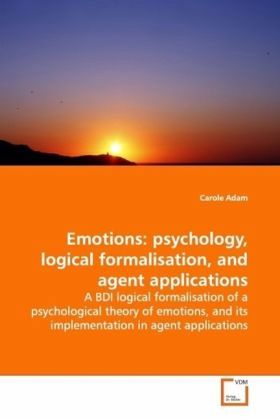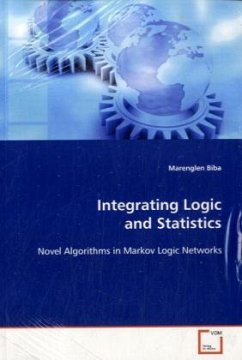
Emotions: psychology, logical formalisation, and agent applications
A BDI logical formalisation of a psychological theory of emotions, and its implementation in agent applications
Versandkostenfrei!
Versandfertig in 6-10 Tagen
52,99 €
inkl. MwSt.

PAYBACK Punkte
26 °P sammeln!
This book proposes a formalisation of emotions in aBDI logic (logic of belief, desire and intention).Such a formalisation aims at helping the design ofemotional agents. The first part isdedicated to the state of the art, from the point ofview of both psychology (history of theories ofemotions) and computer science (emotional agents andtheir applications). The second part is dedicated tothe logical formalisation of emotions; it introducesthe logical framework, exposes and argues the formaldefinitions of twenty emotions, and proves some oftheir properties. Finally the last part is dedicatedto pr...
This book proposes a formalisation of emotions in a
BDI logic (logic of belief, desire and intention).
Such a formalisation aims at helping the design of
emotional agents. The first part is
dedicated to the state of the art, from the point of
view of both psychology (history of theories of
emotions) and computer science (emotional agents and
their applications). The second part is dedicated to
the logical formalisation of emotions; it introduces
the logical framework, exposes and argues the formal
definitions of twenty emotions, and proves some of
their properties. Finally the last part is dedicated
to practical applications and continuation prospects
of this work. Such a work offers interesting
contributions: it provides the agent community with a
formal model of a great number of emotions; it shows
the interest of BDI logics; and it opens research
prospects about the dynamics of emotions and their
influence on the behaviour of agents, a field not
much explored yet.
BDI logic (logic of belief, desire and intention).
Such a formalisation aims at helping the design of
emotional agents. The first part is
dedicated to the state of the art, from the point of
view of both psychology (history of theories of
emotions) and computer science (emotional agents and
their applications). The second part is dedicated to
the logical formalisation of emotions; it introduces
the logical framework, exposes and argues the formal
definitions of twenty emotions, and proves some of
their properties. Finally the last part is dedicated
to practical applications and continuation prospects
of this work. Such a work offers interesting
contributions: it provides the agent community with a
formal model of a great number of emotions; it shows
the interest of BDI logics; and it opens research
prospects about the dynamics of emotions and their
influence on the behaviour of agents, a field not
much explored yet.












